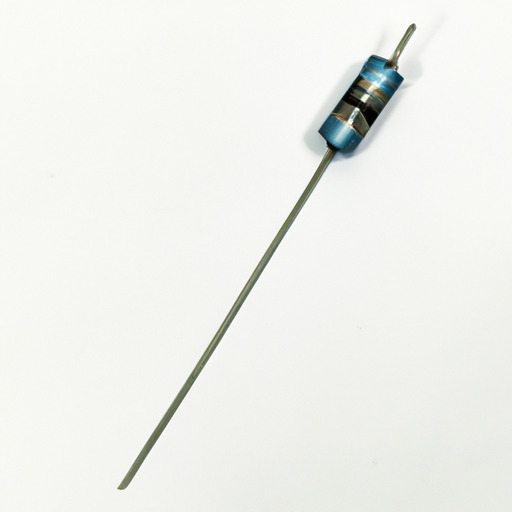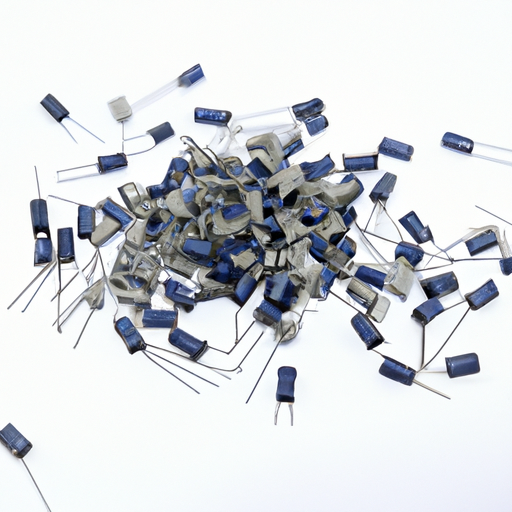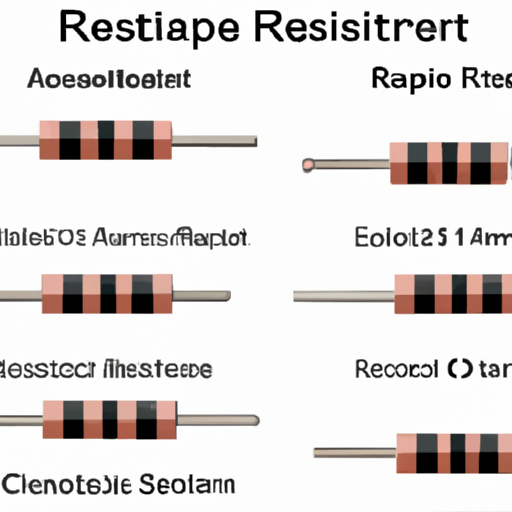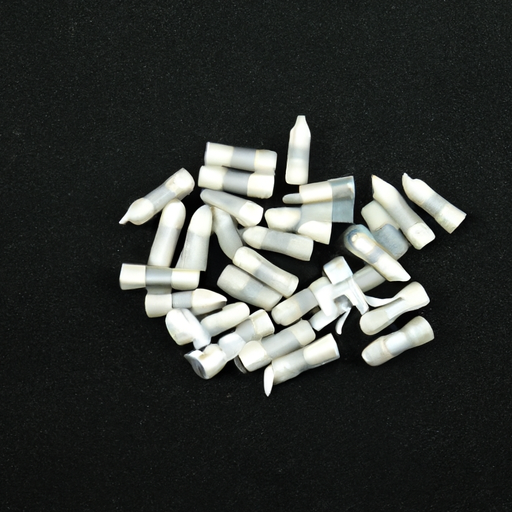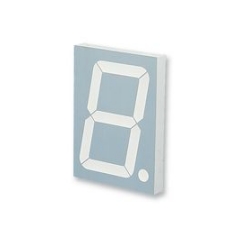What is a porcelain tube resistor?
What is a Porcelain Tube Resistor?
I. Introduction
In the world of electrical engineering, resistors play a crucial role in controlling the flow of electric current. Among the various types of resistors, porcelain tube resistors stand out due to their unique properties and applications. This article aims to provide a comprehensive understanding of porcelain tube resistors, exploring their historical background, structure, working principles, applications, advantages, and future trends.
II. Historical Background
The development of resistors has been a significant milestone in electrical engineering. Early resistors were made from simple materials like carbon and metal, but as technology advanced, the need for more durable and efficient components became apparent. Porcelain, a ceramic material known for its high thermal stability and electrical insulation properties, was introduced as a viable option for resistors in the mid-20th century.
Porcelain tube resistors evolved over time, adapting to the increasing demands of modern electronics. Their ability to withstand high temperatures and harsh environmental conditions made them a preferred choice in various applications, from industrial machinery to consumer electronics.
III. Structure and Composition
A. Description of Porcelain as a Material
Porcelain is a type of ceramic that is fired at high temperatures, resulting in a dense, hard material. Its properties include:
1. **High Thermal Stability**: Porcelain can withstand extreme temperatures without degrading, making it ideal for high-power applications.
2. **Electrical Insulation**: Porcelain is an excellent insulator, preventing unwanted current leakage and ensuring safety in electrical circuits.
B. Design of Porcelain Tube Resistors
Porcelain tube resistors are typically cylindrical in shape, allowing for efficient heat dissipation. They come in various sizes and designs, catering to different electrical requirements. The internal structure often includes a resistive element made from a conductive material, which is encased in the porcelain tube to provide insulation and protection.
C. Comparison with Other Types of Resistors
Porcelain tube resistors can be compared to other common resistor types:
1. **Carbon Film Resistors**: These are made from a thin layer of carbon and are generally less expensive but may not handle high temperatures as well as porcelain tube resistors.
2. **Wire-Wound Resistors**: These consist of a wire wound around a core and are known for their precision but can be bulkier and less durable than porcelain tube resistors.
3. **Metal Oxide Resistors**: These resistors offer good thermal stability but may not provide the same level of insulation as porcelain.
IV. Working Principle
A. How Porcelain Tube Resistors Function
Porcelain tube resistors operate on the principle of resistance, which is the opposition to the flow of electric current. When current passes through the resistive element, it generates heat due to the resistance. The porcelain casing plays a vital role in dissipating this heat, preventing overheating and ensuring the resistor operates within safe limits.
B. Electrical Characteristics
Porcelain tube resistors exhibit several important electrical characteristics:
1. **Resistance Values**: They are available in a wide range of resistance values, allowing for flexibility in circuit design.
2. **Tolerance Levels**: These resistors typically have low tolerance levels, ensuring accurate performance in critical applications.
3. **Temperature Coefficient**: The temperature coefficient indicates how the resistance changes with temperature. Porcelain tube resistors generally have a low temperature coefficient, making them stable across varying temperatures.
V. Applications
A. Common Uses in Electrical and Electronic Circuits
Porcelain tube resistors are widely used in various applications, including:
1. **Power Supplies**: They help regulate voltage and current in power supply circuits, ensuring stable operation.
2. **Audio Equipment**: Their low noise characteristics make them ideal for high-fidelity audio applications, where sound quality is paramount.
3. **Industrial Applications**: In industrial machinery, porcelain tube resistors are used for their durability and ability to withstand harsh conditions.
B. Advantages in Specific Applications
1. **High-Temperature Resistance**: Porcelain tube resistors can operate effectively in high-temperature environments, making them suitable for applications like automotive electronics.
2. **Durability and Longevity**: Their robust construction ensures a long lifespan, reducing the need for frequent replacements.
3. **Insulation Properties**: The excellent insulation provided by porcelain enhances safety and reliability in electrical circuits.
VI. Advantages and Disadvantages
A. Benefits of Using Porcelain Tube Resistors
1. **High Thermal Stability**: They can handle significant heat without performance degradation.
2. **Resistance to Environmental Factors**: Porcelain is resistant to moisture, chemicals, and other environmental factors, making these resistors suitable for outdoor and industrial applications.
3. **Low Noise Characteristics**: They produce minimal electrical noise, which is crucial in sensitive electronic applications.
B. Limitations and Drawbacks
1. **Cost Considerations**: Porcelain tube resistors can be more expensive than other types, which may limit their use in cost-sensitive applications.
2. **Size and Weight Issues**: Their robust design can make them bulkier and heavier than alternatives, which may be a disadvantage in compact electronic devices.
3. **Availability in the Market**: While they are widely used, porcelain tube resistors may not be as readily available as more common resistor types.
VII. Maintenance and Care
A. Best Practices for Handling Porcelain Tube Resistors
To ensure the longevity and performance of porcelain tube resistors, it is essential to handle them with care. Avoid dropping or subjecting them to mechanical stress, as this can cause cracks or damage.
B. Tips for Ensuring Longevity and Performance
1. **Proper Installation**: Ensure that resistors are installed correctly in circuits to prevent overheating and ensure optimal performance.
2. **Regular Inspections**: Periodically check for signs of wear or damage, especially in high-stress applications.
C. Troubleshooting Common Issues
If a porcelain tube resistor fails, it may be due to overheating, incorrect resistance values, or physical damage. Identifying the root cause is crucial for effective troubleshooting and replacement.
VIII. Future Trends and Innovations
A. Advances in Materials Science Affecting Resistor Design
As materials science continues to evolve, new materials and manufacturing techniques may enhance the performance and capabilities of porcelain tube resistors. Innovations could lead to lighter, more efficient designs that maintain the benefits of traditional porcelain.
B. Potential Developments in Porcelain Tube Resistor Technology
Future developments may include improved thermal management systems, enhanced resistance values, and better integration with modern electronic components, making porcelain tube resistors even more versatile.
C. The Role of Porcelain Tube Resistors in Emerging Technologies
With the rise of electric vehicles, renewable energy systems, and advanced electronics, porcelain tube resistors are likely to play a significant role in ensuring the reliability and efficiency of these technologies.
IX. Conclusion
Porcelain tube resistors are a vital component in the landscape of electrical engineering, offering unique advantages in terms of thermal stability, durability, and insulation properties. As technology continues to advance, these resistors will remain essential in various applications, from industrial machinery to consumer electronics. Understanding their significance and functionality can lead to better design choices and innovations in the field of electronics.
X. References
For those interested in further exploring the topic of porcelain tube resistors and resistors in general, the following resources are recommended:
1. **Books on Electrical Engineering**: Look for textbooks that cover resistor technology and materials science.
2. **Academic Papers**: Research articles on the latest developments in resistor technology and materials.
3. **Industry Standards**: Familiarize yourself with guidelines and standards related to resistor usage in electrical circuits.
By delving deeper into the world of resistors, engineers and enthusiasts alike can enhance their understanding and application of these critical components in modern electronics.

